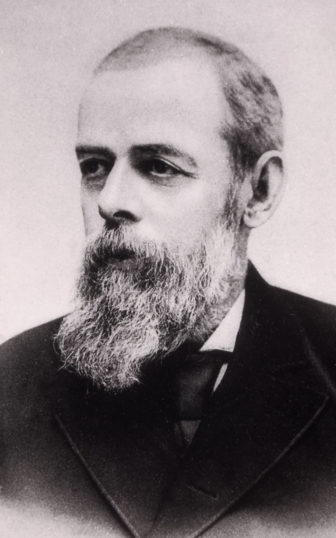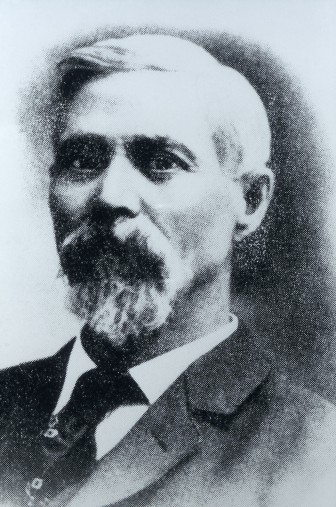When I came downstairs for my morning coffee on Tuesday, my wife pointed to a headline reading “Wonderland Report” on the front page of the Bozeman Daily Chronicle. It was for a story about a manuscript describing the 1869 Folsom-Cook-Peterson expedition to the area that became Yellowstone National Park. The manuscript was recently obtained by the Montana State University Library. I skimmed through the story and commented that the newly discovered manuscript should help historians answer some long-standing questions.
Historians generally credit the Folsom-Cook-Peterson expedition as the first serious effort to explore and document the wonders of the upper Yellowstone. Trappers and prospectors had been telling stories for decades about fountains of boiling water, canyons a thousand feet deep, and mountains of glass. At first people discounted such reports as tall tales, but by the late 1860s, it became obvious that there really were wonders in the area.
Montanans made several attempts to mount expeditions large enough to repel Indian attacks in the 1860s, but they all fizzled. Then David E. Folsom and Charles Cook figured that the Indians wouldn’t notice a small group traveling through the area. William Peterson, who worked for Cook, volunteered to go with them. The trio traveled through the area that became Yellowstone Park for about a month in September and October of 1869.
When they returned home, the checkered history of the report of their adventures began. (Details surrounding publication of the Folsom-Cook-Peterson report are described in Aubrey L. Hains’ book, Yellowstone National Park: Its Exploration and Establishment, National Park Service in 1974.)
At first, the men were reluctant to write about what they had seen. As Folsom said later, “I doubted if any magazine editor would look upon a truthful description in any other light than the production of the too-vivid imagination of a typical Rocky Mountain liar.”
At the behest of a friend who had connections to New York publishing, Folsom and Cook prepared a manuscript that merged separate diaries they kept during the trip. When they submitted the manuscript for publication, Folsom’s fears proved to be well-founded. The New York Tribune, Scribner’s and Harper’s magazines all turned it down. The reason they gave was that they had reputations “they could not risk with such unreliable material.”
Finally, the men succeeded in getting the manuscript published in the less prestigious Chicago-based Western Monthly Magazine in June of 1870. Cook later complained that “the editor cut out portions of the diary which destroyed its continuity” and kept it from “giving a reliable description of our trip.” The magazine also attributed the article solely to Cook.
The Western Monthly offices were destroyed in the Great Chicago Fire of October 1871, which limited access to copies of the report. Also, the Montana State Historical Society had a copy of the magazine containing the story that burned in the Helena fire of 1874. The unfortunate history of the manuscript continued after Folsom lent a copy of it to a professor at Montana State College (now University) and it was destroyed in a fire that gutted the chemistry building in 1916.
N.P. Langford overstated the rarity of the Western Monthly article in an introduction he wrote for Contributions to the Historical Society of Montana, which republished it in 1904. Langford, who helped organize the 1870 Washburn Expedition and became famous for his descriptions of it in Scibner’s Monthly, also mis-attributed the article to Folsom alone, rather than crediting it as a joint effort. The error seems odd because Folsom, Cook and Peterson all were still alive then.
Apparently, the Folsom-Cook article never circulated widely in Montana, so it probably had little impact. But Folsom, who took a job in the Montana Surveyor Generals’ office, worked with another Yellowstone explorer, Walter DeLacy, to produce a famous map of Montana that included the upper Yellowstone. The map showed the “Route of Messrs Cook & Folsom 1869” and provided far more detail about Yellowstone features than had been revealed before.
Also, Folsom’s descriptions helped inspire the Washburn Expedition of 1870, which brought the wonders of the Upper Yellowstone to national attention. The expedition led by Montana Surveyor General Henry D. Washburn included several prominent officials and businessmen whose word could not be doubted. Perhaps more important, several members of the Washburn Expedition were skilled writers with good connections to territorial newspapers and national publications. Their reports eclipsed the Folsom-Cook article and helped create Yellowstone National Park in 1872.
Nearly a hundred years after Folsom, Cook and Peterson visited the Upper Yellowstone, Aubrey L. Haines conducted exhaustive research on their trip. Haines, who is considered the dean of Yellowstone Park historical research, scrutinized everything he could find about the trio, and the University of Oklahoma Press published his findings in 1965 under the title The Valley of the Upper Yellowstone: An Exploration of the headwaters of the Yellowstone River in the Year 1969, as Recorded by Charles W. Cook, David E. Folson, and William Peterson. It will be interesting to compare Haines’ version with the manuscript MSU recently obtained.
Originally published at M. Mark Miller’s blog and reprinted here with permission. For more details on early travel in Yellowstone, see M. Mark Miller’s Adventures in Yellowstone: Early Travelers Tell Their Tales.



In another published book, Peterson worked for Folsom.
My father indicated that he in fact did.
Courious how these get mixedup.
.David
I must correct the account, Peterson probably worked for Cook as My ggrandfather did not yet have his ranch near White Sulphur Springs.
David